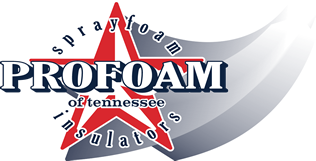Roofing
We maintain a high level of industry professionalism by:
- Staying ahead of industry standards through trade associations and manufacturers
- Immediate communication through around the clock voice or data contact
- Precise project take-off and submittal
- Qualifying right product for specific application
- Delivering appropriate man power for project demands
- Minimizing business disruption
- Maximizing project communication and performance
- Delivering a finished product that is "Just So"
Applies To Any Substrate
Spray polyurethane foam roofing can be used on both new and replacement roofs, whether flat, pitched, domed or having unusual slopes or configurations. It is also ideal for the spray application to tanks, freezers, coolers, piping, ductwork and various aerospace projects.
Ease of Application
A sprayed polyurethane system can be applied in a relatively short period of time with little or no disruption of building operations or exposure.
Lightweight
The weight of spray polyurethane foam(called SPF) roofing is between 2-3 pounds per cubic foot. One inch of polyurethane foam insulation plus 30 mils of an elastomeric coating weight approximately 60 pounds per 100 square feet, as compared to approximately 600 pounds per 100 square feet for a typical conventional four-ply built-up roofing system. This makes a spray polyurethane foam system ideal for reroofing as it is often possible to apply over an existing built-up roof without removing it.
Watertight
A closed-cell, spray polyurethane foam-structure is made of billions of cells that are closed from one to the other which resists the penetration of water and vapors. Because SPF roofing is liquid applied, there are no seams from one side of the roof field to the other making a monolithic seal. Age-old flashing issues with penetrations and parapets are addressed seamlessly with SPF.
Thermal Resistance
Spray polyurethane foam has an R-value of 6.8 per 1 inch thickness, which is comparable to typical rigid foam board. However, because the system is a liquid applied adhering system, there are no seams or mechanical fasteners to act as thermal shorts throughout the entire roof field. Coupled with a reflective coating, this dynamic nets a thermal performance like no other roofing system in the industry.
Elimination of Ponding Water
In reroofing applications, ponding of water may be eliminated by adding an increased thickness of polyurethane foam in low areas. Building up the low areas and sloping the roof so that it drains properly will eliminate ponding water and the additional load factor that is caused by water accumulation.
Elongation
Spray polyurethane foam roofing has the ability to withstand a structures normal expansion and contraction without affecting the ability to keep the structure protected from the outside elements.
Lower Operational Cost
The elastomeric coating system which protects the polyurethane foam can be rejuvenated by the re-application of additional coatings after the initial coatings system has weathered many years of service. An inexpensive recoat of a spray polyurethane foam roof presents a significant cost savings over a costly reroofing process that brings with it building exposure.
Ease of Maintenance
Minor repairs or modifications to a polyurethane system can be made by in-house maintenance personnel at minimal cost. All that is needed is a hand caulking gun and a tube of caulking.
